Christianity is the religion based on the life and teachings of Jesus Christ. Most Christians believe that Jesus is the Son of God and that he is both fully human and fully divine. They believe that Jesus died and rose from the dead, and that his death made it possible for ordinary people to overcome sin and death and spend eternity with God in heaven. All Christians agree that Jesus was unique among human beings.
Jesus lived in Judea (later called Palestine), in what is now northern Israel. The Romans, who governed Judea, crucified Jesus about A.D. 30. Jesus’s followers believed that he rose from the dead, and they soon spread his teachings throughout the Roman Empire.
Historically, Christianity has been strongest in Europe and in areas settled by Europeans, such as the Americas and Australia. However, Christians live in most parts of the world. Since the mid-1900’s, Christianity has flourished in Africa and Asia. Today, Christians make up the largest religious group in the world. Christianity has about 2 1/2 billion followers worldwide. Christianity has had a great impact on the culture and history of areas with large Christian populations. It has inspired art, literature, philosophy, wars, and the creation of empires. This article will discuss the branches of Christianity; church organization and authorities; Christian beliefs, writings, and practices; and the history of Christianity.
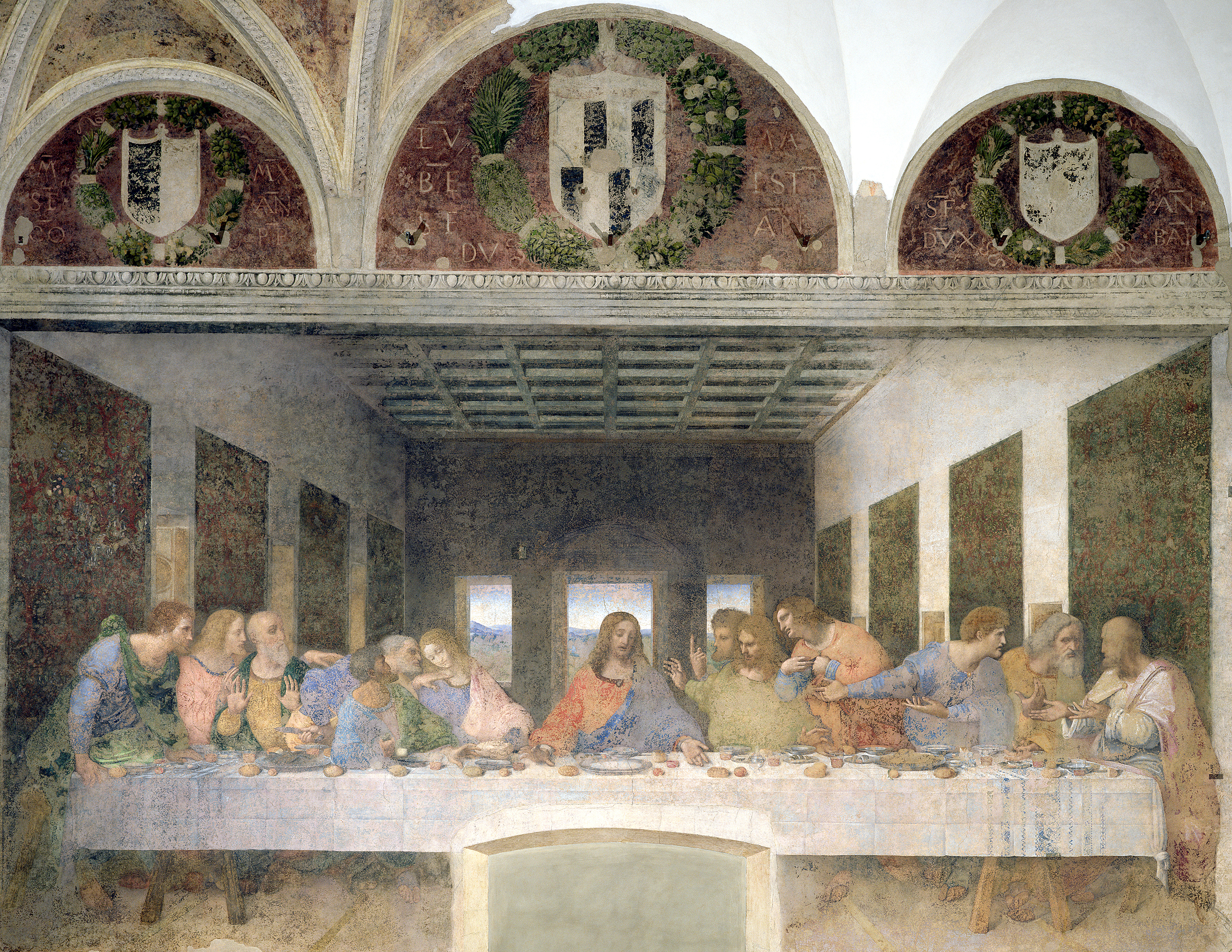
Organization
Branches of Christianity.
Christians make up several major groups, including Roman Catholics, Eastern Orthodox, Anglicans, and Protestants. Anglicans sometimes are grouped with Protestants. Some of these groups include subgroups called denominations. About 200 million people identify themselves as Christians but are not associated with these four main groups.
The Roman Catholic Church,
with about 1 1/3 billion members, is the world’s largest Christian church. Roman Catholics rank as one of the most unified groups of Christians. Church officials called bishops govern Roman Catholic affairs. The pope, who is the bishop of Rome, leads the church. According to church teachings, he is infallible, meaning that he is free from error when speaking officially about Christian beliefs.
Eastern Orthodox Churches
resemble the Catholic Church in many of their beliefs and forms of worship. Bishops govern the churches. The Patriarch of Constantinople holds a position of honor among the bishops, but no single bishop has authority over the others. Eastern Orthodox Churches are most numerous in eastern Europe, Greece, the Middle East, and Russia. There are a number of fully and partially self-governing Orthodox churches, with about 285 million members, that share the same basic beliefs and practices.
Anglican churches
are strongest in countries that were once part of the British Empire. The worldwide Anglican Communion consists of 46 independent churches with about 85 million members. Anglicans worship similarly to Catholics and Eastern Orthodox, and bishops govern church matters. Anglicans consider the archbishop of Canterbury their spiritual leader, but he has no formal power outside the Church of England.
Protestant churches
have about 600 million members worldwide. Protestants do not follow the pope’s leadership. There are many Protestant churches that differ over questions of authority, belief, and worship. The teachings of Martin Luther, a German theologian (religious scholar) of the 1500’s, largely form the basis of Lutheran beliefs, especially the belief that people are saved solely by God’s grace, which is received through faith. The Reformed tradition emphasizes God’s infinite power and the importance of basing church practices on Biblical example. Churches belonging to the Reformed tradition include Baptists, Congregationalists, Dutch Reformed, Presbyterians, and the Uniting Church in Australia. The Anabaptist tradition, including the Amish and Mennonites, emphasizes a simple style of life based on the example of the early church and generally rejects violence. Methodists stress the importance of personal devotion and living a life of holiness. Pentecostals believe the presence of the Holy Spirit is revealed in modern Christians, as it was in Jesus’s early followers, through such experiences as physical healing and speaking in tongues (speaking unknown languages).
Church leadership
usually resides in the clergy—that is, people who become ordained to lead worship, preach, and perform other religious functions. Members of the clergy may be called by a number of names, including ministers, pastors, or priests, depending on the church to which they belong. Christians who are not in the clergy are known as the laity or lay people.
Christian churches have different systems of government. Several churches, including the Anglican, Eastern Orthodox, and Roman Catholic churches, consider their bishops to be the direct successors of Jesus’s apostles. Other Christian denominations, including Methodists, regard bishops mainly as administrators. Presbyterians assign governing functions to councils made up of clergy and laity. Some churches have congregational polity, a system in which primary decision-making responsibility rests with each local congregation.
Beliefs
Christians believe there is one God, and that he created the universe and continues to care for it. Christianity teaches that God sent his only son, Jesus Christ, into the world to free people from sin.
The Trinity.
Most Christians believe that God is a trinity—that is, three distinct persons who make up one God. Each person in the Trinity corresponds to a distinct way in which God relates to humanity. The first person of the Trinity is God the Father, who created the universe and everything in it. The second person is God the Son, who took human form as Jesus Christ. The third person is the Holy Spirit, also called the Holy Ghost, who visited the apostles on the day of Pentecost, after Jesus’s death. The Holy Spirit is God’s power that is active within people and all creation. Christians called Unitarians believe God exists only as the Father, and that Jesus was a man through whom God chose to show people his will and power.
Sin and salvation
are two central doctrines (teachings) of Christianity. The doctrine of original sin teaches that all people are tempted to follow their own desires and defy God’s will. As a result, we are all separated from God and need to be reunited with him spiritually. To save humanity from sin, God took human form as Jesus and let himself be crucified. He rose from the dead and took his place with the Father in heaven. Christians believe that God the Son will return at the end of human time to judge the living and the dead. Jesus’s Resurrection represents God’s triumph over sin and death.
Writings
The Bible.
Christians believe that God made his will known to people through the Bible. The oldest part of the Christian Bible is the Old Testament, which contains the material in the Jewish Bible, also called the Hebrew Bible. In Catholic and Eastern Orthodox Bibles, the Old Testament also includes the Apocrypha, a group of later Jewish writings.
The New Testament contains the Gospels of Matthew, Mark, Luke, and John; the Acts of the Apostles; the Epistles; and the book of Revelation. The Gospels tell the story of Jesus’s life. The Acts tell how Jesus’s disciples continued his work after his Resurrection. The Epistles are letters by early Christian leaders providing advice for Christian churches in the Roman Empire. Revelation, the final book of the New Testament, foretells the end of the world, when Jesus will return to judge all people.
Creeds and catechisms.
Creeds are short statements of faith that set forth essential Christian beliefs. The oldest in use today are the Apostles’ Creed and the Nicene Creed. The earliest version of the Apostles’ Creed can be traced back to about the late A.D. 100’s. The earliest version of the Nicene Creed was written in 325 to refute what Christian leaders believed were false teachings about the nature of Christ. Many Christians recite the Apostles’ Creed and the Nicene Creed during worship services. Catechisms are writings that present basic religious doctrines, often in a question-and-answer format, for use in religious instruction.
Other Christian writings
include works by theologians who have tried to explain more fully the meaning of the Bible and other basic teachings. Important Christian theologians have included Saint Augustine, born in North Africa in the 300’s, and Saint Thomas Aquinas, born in Italy in the 1200’s. Augustine wrote about how God worked in human history and what it meant to experience God’s grace after living a sinful life. Thomas used the ideas of the ancient Greek philosopher Aristotle to explain Christian doctrine. Many theologians, including Thomas, have examined the roles of divine revelation and human reason in religion. Thinkers in the 1600’s to the 1800’s sought to base religion on reason. In the mid-1800’s, the Danish philosopher Søren Kierkegaard held that religious faith was not rational.
Modern theologians address such questions as whether Christianity is the only true religion in a world where many different faiths exist. Feminist theologians are concerned with how Christian teachings affect women. Liberation theologians apply Jesus’s teachings to struggles for social reform and human rights, especially in less developed countries.
Practices
Sacraments
are solemn observances or rituals. Many Christians believe they can experience God’s salvation through the sacraments. Others regard the sacraments mainly as ordinances—that is, actions commanded by God in the Bible to remind people of what he has done for them. The sacraments often mark important life changes. Various Christian denominations hold different beliefs about the nature and number of sacraments, but most denominations include at least two sacraments—baptism and Communion—in their worship.
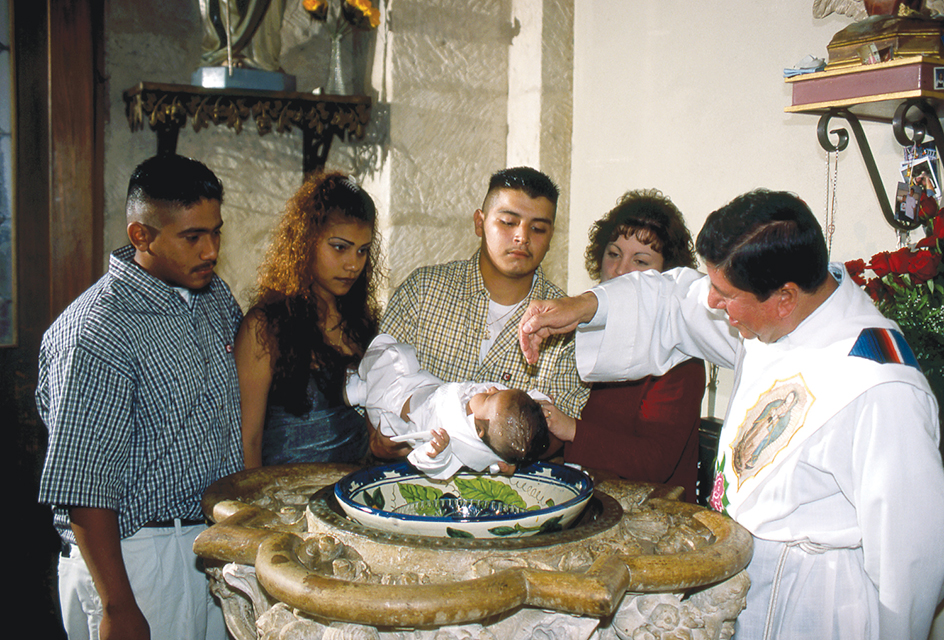
Communion—also called Holy Communion, the Lord’s Supper, or the Eucharist—is based on the Last Supper, Jesus’s final meal with his apostles. During Communion, Christians eat bread and drink wine that have been consecrated (made holy) or blessed. Some Christians believe that the bread and wine actually become the body and blood of Jesus, while others believe they are symbols or reminders of Jesus’s life and death.
Catholics and Eastern Orthodox regard five additional practices as sacraments. Catholics call them the sacraments of penance (also called reconciliation), confirmation, ordination, marriage, and anointing of the sick. Eastern Orthodox call them the mysteries of chrismation, confession, ordination, marriage, and holy unction. Eastern Orthodox administer chrismation immediately after baptism to grant the baptized person full membership in the church. Catholics call this sacrament confirmation and usually administer it to young adults, who can make a voluntary commitment to a Christian life. In the sacrament of penance (confession), individuals confess their sins to a priest and receive forgiveness. Ordination of the clergy and marriage represent the choice of a particular role in adult life. During anointing of the sick (holy unction), a priest prays for the ill or dying and anoints them with holy oil.
Forms of worship
for particular churches are called liturgies. Anglican, Catholic, Eastern Orthodox, and Lutheran churches sometimes are called liturgical churches, because their worship follows an elaborate set form. Most Christian worship includes Bible readings, prayers, and sermons. Clergy often base their sermons on readings from the Bible and attempt to explain how the Bible relates to everyday life.
Christian worship services usually take place on Sunday morning but may occur at other times. Christmas, the celebration on December 25 of Jesus’s birth, and Easter, the celebration in March or April of Jesus’s Resurrection, are the most important Christian holy days. Other holy days include All Saints’ Day, Epiphany, and Pentecost. Pentecost, which celebrates the gift of the Holy Spirit to the church, marks the end of the 50-day observance of Easter. Epiphany, in early January, celebrates the visit of the Magi (wise men) to the baby Jesus. Eastern Orthodox celebrate Jesus’s baptism on this day.
Many churches follow a cycle known as the liturgical year. It begins with Advent, a period of waiting for Jesus’s birth that starts four Sundays before Christmas. Another important time in the liturgical year is Lent, a period that begins on Ash Wednesday and lasts 40 days until Easter. Lent is a time for reflection and repentance. Many Christians observe Lent by giving up something they enjoy or performing good works.
History
Origins.
Christianity began in Judea, a historical region in what is now Israel. Jesus was born there probably in or a few years before 4 B.C. The Gospels contain stories about his birth in the city of Bethlehem. His parents, Mary and Joseph, were Jews who lived in the city of Nazareth. Christians call Mary the Virgin Mary. Many believe Jesus’s birth fulfilled a prophecy that a virgin would give birth to the Messiah, a Hebrew word meaning the anointed one. Jesus began his public ministry in Galilee, north of Judea, when he was in his early 30’s.
According to the Gospels, Jesus attracted disciples by preaching, performing miracles, and criticizing the Jewish authorities. Jesus preached about the coming of the Kingdom of God, meaning an eternally just and peaceful state of affairs. His disciples believed he was the chosen messenger of God. In Greek, he was called the Christ, a translation of messiah.
The Romans, who governed Judea, executed Jesus about A.D. 30. Later, his followers found his tomb empty and believed Jesus had risen from the dead. According to the Gospels, the book of Acts, and the letters of the apostle Paul, Jesus appeared on Earth a number of times after his death. His disciples regarded him as the Son of God and began to preach his message of salvation.
The early church.
Jesus’s disciples quickly spread his teachings throughout the Roman Empire, and converts organized churches. The book of Acts and letters written by the apostle Paul indicate that churches were founded in many cities, including Rome; Ephesus, in what is now Turkey; and Corinth and Thessaloniki, Greece. As their message spread, the apostles had to determine whether they were teaching a new form of Judaism or a new religion. They decided that Christians were not a separate people, like the Jews, but believers in a religion intended for all. The word catholic means universal or including all.
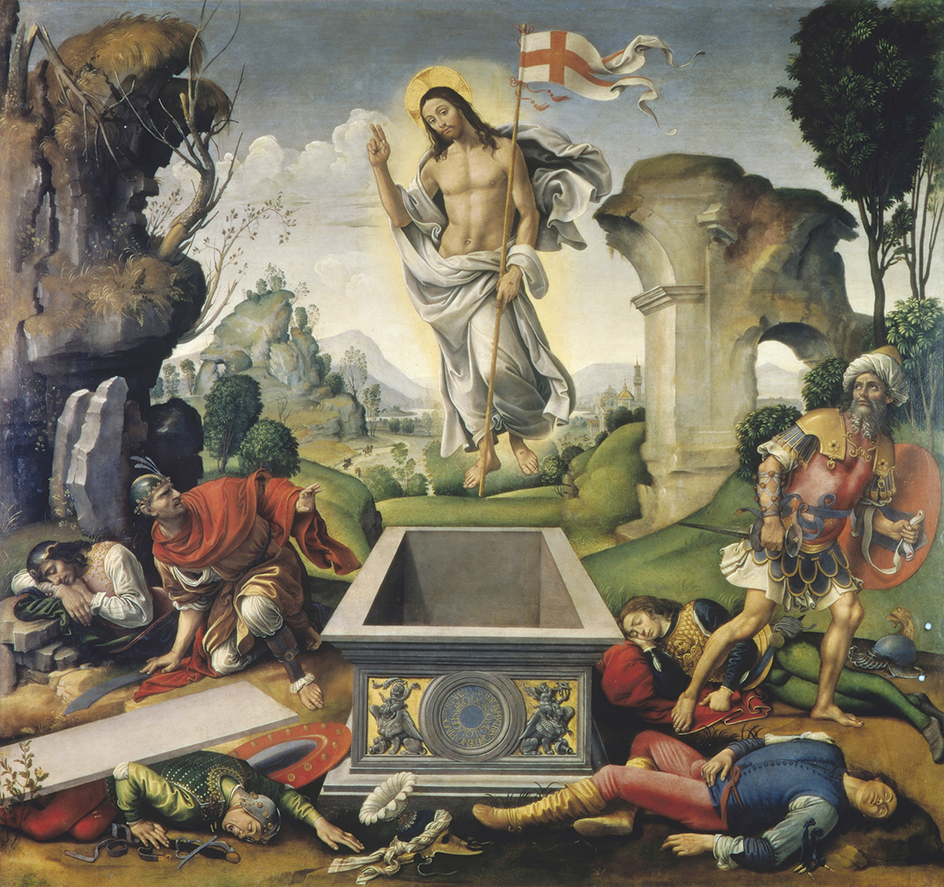
The first Christians believed that Jesus would return soon, though they could not know when. They refused to honor Roman gods, which the Romans believed could anger the gods and thus endanger the empire. Some Roman emperors had early Christians arrested, imprisoned, and even killed. Some Christians welcomed the chance to become martyrs (individuals who suffered or died for their faith).
During the first century A.D., Christianity spread rapidly throughout the Mediterranean region. Several cities became especially important to Christians, including Alexandria, Egypt; Antioch, in present-day Turkey; Jerusalem, in present-day Israel; and Rome. During the 100’s to 200’s, leading priests in these and other cities began using the title of bishop, which indicated their authority over area churches. Deacons assisted in worship and were responsible for the care of the poor. This threefold ministry of bishop, priest, and deacon provided a model for later Christian communities.
Most early Christians accepted the books of the Jewish Bible as inspired by God and made them part of the Christian Bible. They also added their own writings to the canon—that is, the official list of books of the Bible. In addition to the four Gospels, some early Christians wrote stories that presented different views of Jesus. Most Christians eventually rejected these stories. The process of developing the canon went on for centuries.
Loading the player...Matthew 16:18
Constantine.

Constantine was disturbed by stories of violent arguments about basic Christian doctrines. He called the Christian bishops to Nicaea (now Iznik in northwest Turkey) to settle such fundamental questions as the nature of Christ. In 325, the Council of Nicaea drew up the earliest version of what is now called the Nicene Creed. The creed affirmed that Jesus Christ was divine, “being of one substance with the Father.”
In 330, Constantine founded a new capital of the Roman Empire at Byzantium, later renamed Constantinople (now Istanbul, Turkey). The city became a center of religious power that rivaled Rome. The bishop of Constantinople became the most influential representative of the mainly Greek-speaking Christians in the eastern part of the empire. The pope continued to exercise influence over the mainly Latin-speaking Christians in the west.
The Roman Empire splits.
In 395, the Roman Empire split into the West Roman Empire and the East Roman Empire, also called the Byzantine Empire. Churches in the Byzantine Empire, based in Constantinople, continued to develop their own Greek-speaking culture. They eventually became known as the Eastern Orthodox Churches. Missionaries from Constantinople established churches in much of eastern Europe, especially Russia.
In the 200’s, Germanic tribes had begun invading Italy from the north. Rome’s civil government broke down, and a Germanic tribe called the Visigoths sacked the city in 410. In 476, Germanic forces led by the general Odoacer overthrew the last emperor of the West Roman Empire. The church was a source of stability in the period that followed. The pope, a well-respected leader, and other bishops took over many responsibilities that the civil leaders could no longer carry out.
The medieval church.
In the Middle Ages, from about the 400’s to about 1500, the church gained enormous influence in all areas of European life. Under the leadership of the popes in Rome, Christianity had spread through most of western and central Europe by the 800’s, and north into Scandinavia by the mid-1000’s. Meanwhile, missionaries from Constantinople founded churches in much of eastern Europe, including Russia.
As Christianity expanded, the church acquired wealth. Thousands of churches, including grand cathedrals, were constructed throughout Europe. Gothic-style cathedrals in such cities as Chartres, France, and Canterbury, England, became great monuments of architecture. Because the pope had become such a powerful figure, frequent arguments broke out between the church and civil rulers in western Europe.
Relations between the Eastern Orthodox and Western churches grew tense. In 1054, the leaders of the two branches ceased to recognize each other as fellow Christians. The Western Church, under the authority of the pope, became known as the Catholic, or Roman Catholic, Church.
From the late 1000’s to the 1500’s, European church leaders launched a series of religious wars called the Crusades. The original goal was to reconquer Palestine, which Muslim Arabs had taken from the Byzantine Empire in the 600’s. The Crusades had some temporary success. However, the Muslims eventually defeated and expelled the Europeans who had invaded the Middle East.
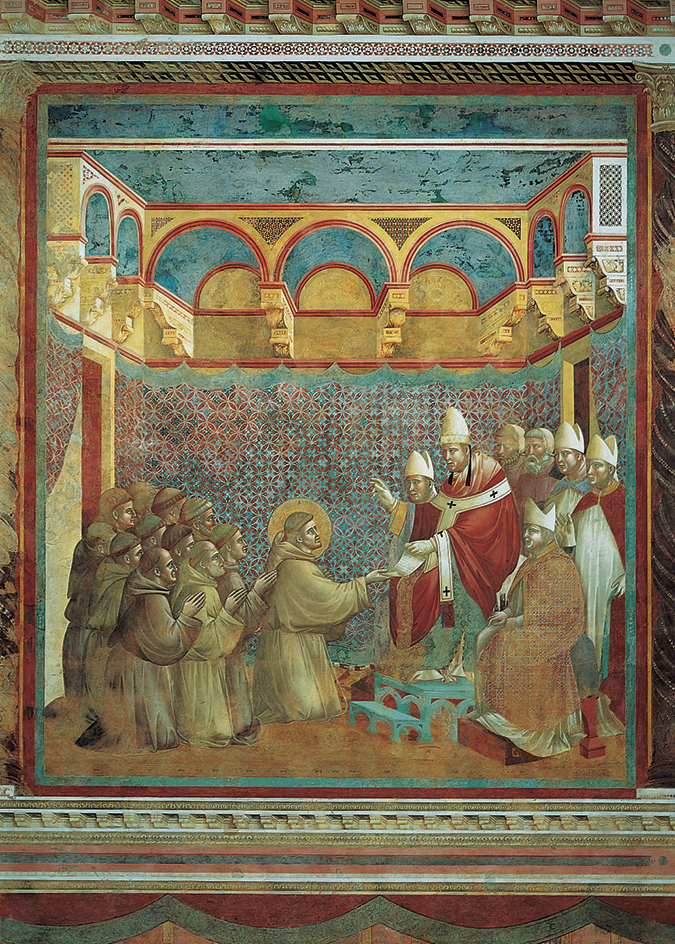
The Reformation.
By the early 1500’s, many European Christians believed that the church was in need of major reform. Some, like the Dutch priest Desiderius Erasmus, thought many of the clergy had become corrupt. Others sought to reform church doctrines. Several reform movements developed, including Lutheranism, the Reformed tradition, the Radical Reformation, and the Church of England. These movements called for a return to a Christianity based more closely on the Bible. Together, they became known as the Protestant Reformation, because they were based on protests against Catholic practices and teachings.
Lutheranism.
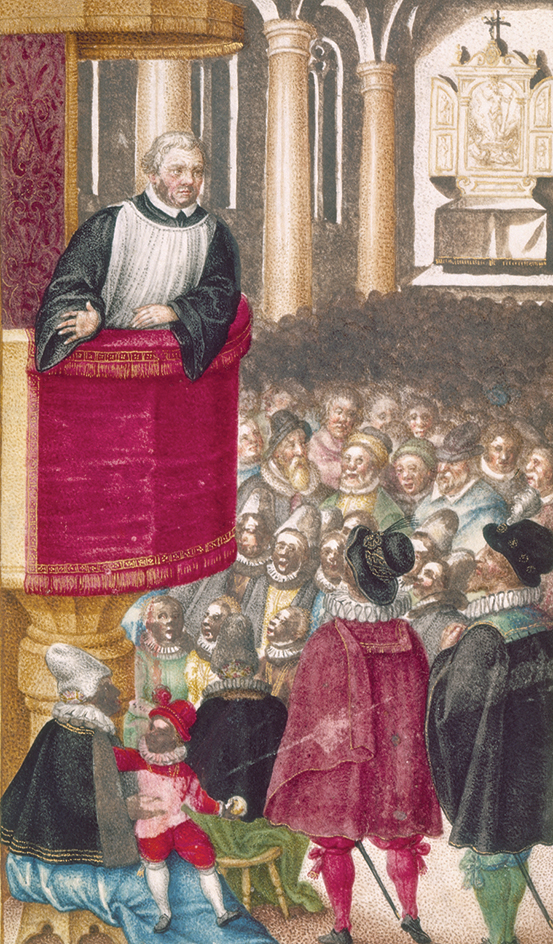
The Reformed tradition
originated in Switzerland, where the religious reformers Huldreich Zwingli and John Calvin expanded on Luther’s ideas. Zwingli and Calvin called for reforming the government to carry out God’s law, as expressed in the Bible. They also rid their churches of religious imagery. Calvin taught an understanding of predestination that said God had decided at the beginning of time who would be saved and who damned. The Reformed tradition spread to England, France, Germany, the Netherlands, and Scotland.
The Radical Reformation
began in the 1520’s, when small groups of Christians more radical than earlier reformers began springing up. They were called Anabaptists and limited baptism to believers old enough to profess their faith. They also believed that Christians should follow Jesus’s teachings literally. For example, in the Bible, Jesus tells his followers to “turn the other cheek,” meaning that they should not fight back when persecuted. Thus, most Anabaptists refused to bear arms. The Anabaptists were strongest in Switzerland, the Netherlands, and southern Germany.
The Church of England
was established in the 1530’s by the English Parliament. King Henry VIII of England became angry when the pope refused to annul (cancel) his marriage to Catherine of Aragon. He had Parliament pass a series of laws denying the pope’s authority in England and making Henry head of a new church, the Church of England. The Anglican Communion later developed from the Church of England.
The Counter Reformation.
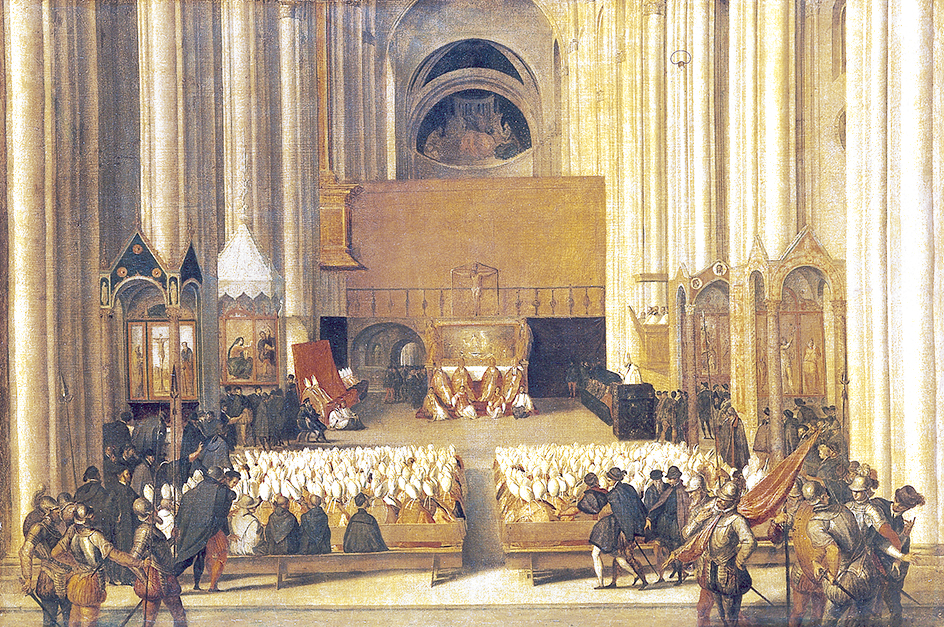
A leading force in the Counter Reformation was the Society of Jesus, also known as the Jesuit order. A Spanish soldier named Ignatius Loyola founded the order in 1534. The Jesuits fought Protestantism through preaching and education. Along with such Catholic orders as the Dominicans and the Franciscans, they worked to spread Christianity in the vast overseas empires established by France, Portugal, and Spain.
From 1545 to 1563, a meeting of Catholic bishops called the Council of Trent ended many abuses of power in the church. The council also provided for better education for the clergy and officially denied many Protestant teachings.
The 1600’s and 1700’s.
After the Reformation, struggles between Catholics and Protestants led to a long period of conflict in Europe. The Thirty Years’ War (1618-1648), actually a series of wars, began as a civil conflict between Catholics and Protestants in the Holy Roman Empire. Eventually, most of Europe became involved. However, the wars had limited impact on religious loyalties in most of Europe. Much of Europe remained Catholic. Governments in northern Germany and Scandinavia supported Lutheranism. The Reformed churches became dominant in the Netherlands, in parts of Germany, Hungary, and Switzerland, and in Scotland, where John Knox helped establish the Presbyterian tradition.
Beginning in the early 1600’s, Puritans, who were impatient for further religious reform in England, founded several colonies in North America. The first group landed at what is now Plymouth, Massachusetts, in 1620. The Puritans established churches and civil governments based on Biblical principles. Their values greatly influenced the development of the United States.
An intellectual movement called the Enlightenment began in the 1600’s and spread throughout Europe and North America. Enlightenment philosophers emphasized the use of observation and reason, rather than a reliance on tradition and authority, to obtain knowledge. Some Enlightenment thinkers believed that Christian teachings were true, and that they could be proved by using reason. Others believed that reason would disprove Christian doctrines.
Another movement that spread from Europe to North America beginning in the late 1600’s was Pietism. Pietism stressed personal devotion to God and morality as the most profound expressions of faith. Pietists did not challenge the established churches openly, but organized small groups for prayer and Bible study.
Beginning in the 1730’s, a Christian revival known as the Great Awakening occurred in the American Colonies. The revival was led by Jonathan Edwards, George Whitefield, and other colonial ministers, who used preaching to stir the emotions. The stirring sermons of Great Awakening preachers called on listeners to repent of their sins and seek salvation.
In the 1740’s, an English clergyman named John Wesley began to organize the Methodist movement. Wesley emphasized the need for personal religious experience. He also taught that Christians could live free from sin if they practiced self-discipline. Methodism gained numerous followers, especially in the United States.
The 1800’s
brought challenges to Christianity. One challenge was socialism, which originated in Europe at that time. Socialist ideas developed partly as a reaction against hardships suffered by workers during the rapid industrial growth of the 1800’s. Most factory workers and miners were poorly paid and worked long hours under miserable conditions. Karl Marx, a German philosopher, became the most influential socialist. Socialism and Marxism challenged established Christian churches and appealed to the working classes.
By the late 1800’s, Christian leaders had begun to respond to changing social conditions. In 1891, Pope Leo XIII issued an encyclical (general letter), titled “Rerum Novarum” (“Of New Things”), that called on employers to pay their workers a just wage. In the United Kingdom, F. D. Maurice and other thinkers began a movement to combine Christian and socialist policies. In the United States, such Protestant ministers as Washington Gladden and Walter Rauschenbusch preached the Social Gospel, which sought to apply Christian teachings to labor issues and other social problems.
Science posed another challenge to Christianity. In The Origin of Species (1859), the British naturalist Charles Darwin argued that all living beings had developed over millions of years from simpler forms of life. He also said that only the fittest species had survived. Many Christians believed that these ideas clashed with a traditional understanding of the Bible. Others thought that Darwin’s ideas were compatible with modern interpretations of the Bible.
European nationalism resulted in conflicts during the late 1800’s that weakened the Roman Catholic Church. For many centuries, what is now Germany had consisted of dozens of separate states with a common language and history. In 1871, the Prussian statesman Otto von Bismarck united these states. He then passed laws to try to limit the political influence of Germany’s churches, especially the Roman Catholic Church, which he considered a threat to national unity.
In Italy, the Papal States posed an obstacle to national unification. These states, which stretched across central Italy, were under the direct authority of the pope. In the mid-1800’s, Italian troops seized the Papal States and made them part of a unified Italian kingdom. The pope refused to deal with the Italian government until 1929, when the government recognized Vatican City, which lies entirely within Rome, as an independent country.
Growth in the United States.
While Christianity faced challenges in Europe, it flourished in the United States. In 1791, the First Amendment to the Constitution of the United States prohibited the government from supporting or persecuting any religious group. Thus, a wide variety of churches were free to worship as they pleased and compete for members. These churches included different Protestant denominations established in colonial times. In addition, many Roman Catholics migrated to the United States from Europe. By the 1850’s, Roman Catholicism was the largest denomination nationwide.
Revivalism, a rousing style of preaching that developed during the Great Awakening, effectively spread Protestantism on the American frontier and in cities during the 1800’s. Protestants founded many organizations that worked toward such reforms as the abolition of slavery and the prohibition of alcoholic beverages. African American slaves developed their own form of Christianity that combined African traditions with elements of mainly Baptist and Methodist worship.
The 1900’s.
Several worldwide developments had a great impact on Christianity during the 1900’s. These included two world wars and an intense rivalry between Communist and non-Communist governments.
Neo-Orthodoxy
was a Christian movement that emerged in the early 1900’s, following World War I (1914-1918). During the late 1800’s, liberal Protestant thinkers had supported an optimistic view of human nature. They considered sin more of a social problem than a human flaw. After the war, such theologians as Karl Barth in Switzerland and the brothers Reinhold and H. Richard Niebuhr in the United States led a movement that became known as Neo-Orthodoxy. Rejecting the liberals’ optimistic view of human nature, Neo-Orthodox thinkers revived older ideas about the sinful nature of humanity. They argued that war and other catastrophes occurred because people had become proud and forgotten their dependence on God.
Relations between Jews and Christians
became a prominent issue following World War II (1939-1945). For centuries, many Christians had blamed the Jews for the death of Jesus and, at times, had persecuted them. According to the Gospels, the Jewish leaders of Judea demanded that the Romans execute Jesus. After the world learned that the Nazis had murdered millions of Jews during the war, many Christian groups, including the Catholic Church, stated officially that it was wrong for Christians to blame the Jews for Jesus’s death.
Vatican Council II,
a worldwide gathering of Catholic bishops that met from 1962 to 1965, worked to modernize the church. It introduced some new Catholic practices, such as celebrating the Mass in everyday languages rather than in Latin. It also promoted better relations with non-Catholics. For example, the council denounced all forms of anti-Semitism (prejudice against Jews) and laid the basis for a new understanding and respect between Christian and Jewish people.
In Communist nations,
such as China and the Soviet Union, leaders discouraged any religious faith because they considered it a threat to their authority. They jailed and even killed many Christians because of their beliefs. Such persecution often had the effect of strengthening Christian faith, and the church became a symbol of political resistance. The Soviet Union broke up in 1991, and its republics became independent nations. Christianity’s influence is changing in these newly created countries, where Christianity no longer represents resistance to a central Communist government.
Christianity today
Today, most Europeans consider themselves Christians. For many, however, religion may play only a small part in daily life. For example, only a small percentage of Europeans attend religious services regularly. Secularism, the practice of keeping government and religion separate, has become increasingly common. As a result, Christian churches in much of Europe have lost political influence since the mid-1900’s. On a personal level, secularism means living life without reference to religion.
Roman Catholics make up about half of Europe’s Christians. The pope remains an important leader, but he often has more influence outside Europe than on much of that continent.
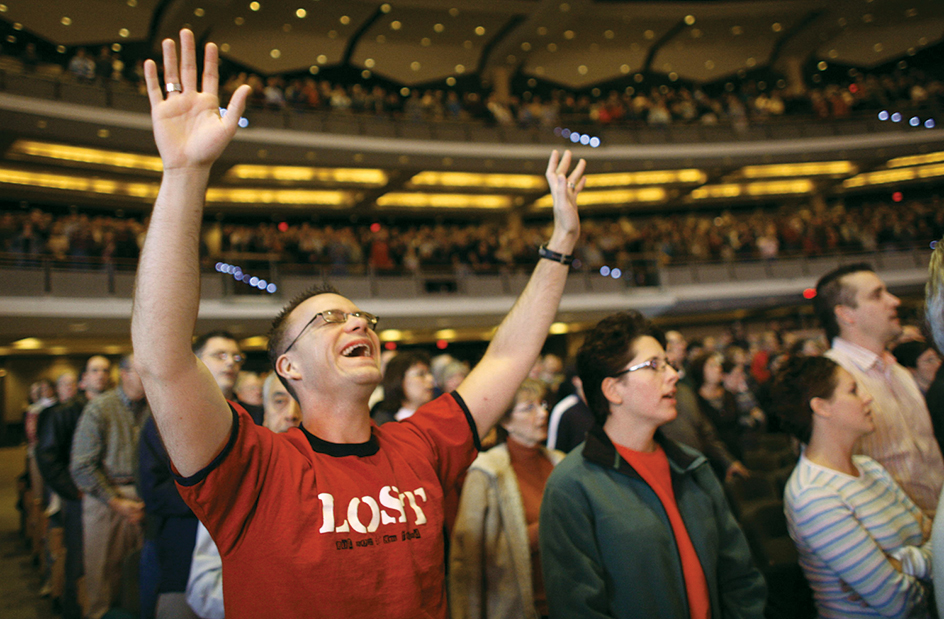
In the United States, about 65 percent of Americans consider themselves Christian, but many of them do not belong to an organized religious group. Roman Catholics rank as the largest single religious denomination, but there are more Protestants overall. The country’s Protestant groups tend to be divided among socially and theologically liberal, moderate, and conservative groups. Liberal denominations include the Unitarian Universalist Association and the United Church of Christ. Moderate groups, also called mainline denominations, include the American Baptist Churches, the Episcopal Church, the Evangelical Lutheran Church in America, the Presbyterian Church (U.S.A.), and the United Methodist Church.
Conservatives include such groups as Pentecostals and Southern Baptists. Conservative Protestants called evangelicals, who emphasize the need for personal religious experience, make up a large, prominent group in the United States. Since the 1970’s, a conservative Protestant movement called the New Religious Right has won considerable influence in U.S. politics. This movement has supported conservative social policies, such as policies against abortion, same-sex marriage, and teaching evolution in public schools.
Roman Catholics also rank as the largest religious group in Canada. Most other Canadians belong to Protestant churches. The largest Protestant denominations are the United Church of Canada and the Anglican Church of Canada.
In Latin America, where missionaries established a strong Catholic tradition during colonial times, a majority of the people are Catholics. Since the mid-1900’s, however, conservative Protestant churches have attracted many converts.
Christianity has grown rapidly in Africa and Asia since the mid-1900’s. In the early 2020’s, about 700 million Christians lived in Africa and about 400 million in Asia.
Christians and Muslims have often come into conflict. Since the mid-1900’s, increased migration by Muslims to Europe and North America has heightened tensions. Terrorist attacks in the early decades of the 2000’s also have inflamed tensions between Christians and Muslims. Some Christians consider Islam a dangerous rival, and others work to foster understanding between the two faiths.
